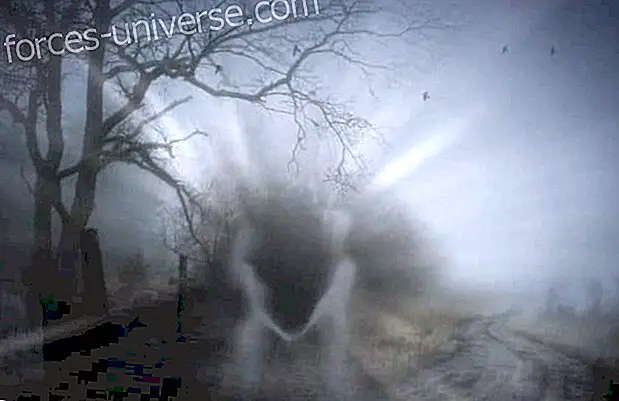
A group of researchers is able to modify several particles of light, in an experiment based on quantum entanglement.
They manage to change, from the present, an event of the past
A group of physicists has just achieved what seemed impossible: modify from the present an event that had already happened before. The feat has been achieved by taking advantage of a strange capacity of the subatomic particles that had already been predicted, but never before could be demonstrated. The spectacular find is published in Nature Physics.
To the long list of extraordinary properties of subathemic particles, it will be necessary to add, from now on, their ability to influence the past. Or, put another way, to modify events that have already happened. The key concept that allows this new and surprising behavior is an old acquaintance of physicists: quantum entanglement, a phenomenon not yet fully understood and consisting of a sort of uni n intimate between two subathemic particles regardless of how far apart they are from each other. When two particles are `` intertwined '', any modification we make on one will be immediately reflected in the other, even if it is at the other end of the Galaxy.
Now, and for the first time, a group of researchers has managed to intertwine particles after measuring them, that is, afterwards and at a time when some of them could have ceased to exist.
Sounds disconcerting, it's true. Even the authors of the experiment themselves refer to him as `` radical '' in the article that appears this week in Nature Physics. That these particles are not intertwined - reads the article, whose first signatory is Xiao-song Ma, of the Institute of Quantum Optics of the University of Vienna - is something which was decided after having measured them.
In essence, researchers have managed to show that actions carried out in the future can influence past events. As long as, of course, we limit the experience to the field of Quantum Physics.
Quantum entanglement
There, in the strange world of subatomic particles, things happen very differently than they do in the "real" and macroscopic world that we can see and touch every day around us. In fact, when quantum entanglement was predicted for the first time, Albert Einstein himself expressed his disgust at the idea by calling it "ghostly action at a distance."
Then, during the last decades, entanglement was tested hundreds of times in the laboratory, without physicists having been able to find out how this kind of "instant communication" can occur between two particles that are not in physical contact. Now, the team at the University of Vienna has taken the entanglement one step further, and has achieved what no one had been able to do so far.
The experiment was elaborated with light particles
To perform their experiment, physicists started from two pairs of light particles, that is, from two “packages” of two photons each. Each of the two particles of each pair of photons were intertwined with each other. Later, a photon of each couple was sent to a hypothetical person named Victor. And of the two particles (one per couple) that were left behind, one was delivered to Bob and the other to Alice. (Bob and Alice are the names that are commonly used to illustrate Quantum Physics experiments).
Victor, having a photon of each pair entwined, has full control over the particles of Bob and Alice. But what would happen if Victor decided to intertwine his two particles? In doing so, also Bob and Alice's photons (already intertwined with each of the two photons held by Victor), would intertwine with each other. The good thing is that Victor can decide to carry out this action at any time he wants, even after Bob and Alice had measured, modified or even destroyed their own photons.
“The really fantastic thing - says Anton Zellinger, also from the University of Vienna and co-author of the experiment - is that this decision to intertwine the two photons can be taken at a much later time. Even in one where the other photons could have ceased to exist. ”
An experiment predicted 12 years ago
The possibility of carrying out this experiment had been predicted in the year 2000, but so far no one had succeeded. “The way we intertwine the particles - explains Zeilinger - is sending them to a crystal whose half is a mirror. The crystal, therefore, reflects half of the photons and lets the other half through. If you send two photons, one on the left and one on the right, each of them will forget where it came from. That is, they will lose their identities and both will be intertwined. ”
Zeilinger says that the technique can one day be used for ultra-fast communication between two quantum computers, capable of using interlacing to store information. Of course, such a machine does not exist yet, although experiments like the one described represent a very firm step towards that goal.
“The idea - says Zeilinger - is to create two pairs of particles, and send one to a computer and the other to the other. So, if we intertwine those particles (as in the experiment), the two computers can use them to exchange information. ”
SOURCE: http://www.abc.es/20120501/ciencia/abci-cambio-pasado-201205010937.html






